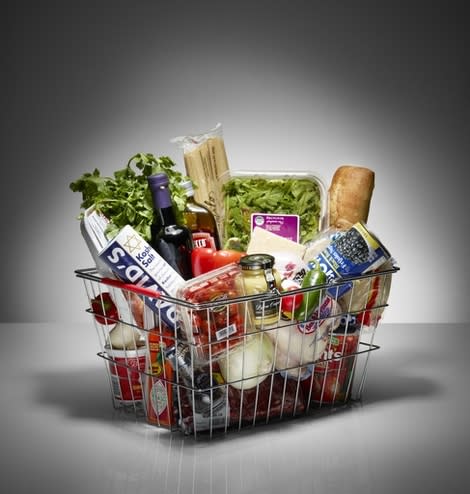6 Ways to Save Money at the Grocery Store
Cut the empty calories and maximize the quality of your supermarket score with these six rules of savvy shopping.

A study published by the Marketing Science Institute found that shoppers who made "quick trips" to the store purchased an average of 54 percent more merchandise than they planned. Instead, be thoughtful in your planning-keep a magnet-based notepad on your fridge and make notes throughout the week about what you need. (And avoiding extra trips will cut down on your gasoline costs as well.)
Write the Perfect Shopping List
Before you head out, organize your list of needs by grocery-store section: produce, dairy, meat, cleaning products, cosmetics, etc. (Rewrite the list if you need to.) Then bring a pencil and, as you add each item to your cart, tick it off from your list. No loitering, no wandering aimlessly through the store. Try to make each visit a minute or two shorter than the last-you'll find that the more time you save, the more money and calories you save too!
Check Yourself Out
Maybe those creepy mechanical voices weird you out, or maybe you just like waiting in long lines to chat with retirees. But waiting in line for a checkout person is an invitation to caloric chaos. A study by IHL Group found that when shoppers used the self-checkout line, impulse purchases dropped by more than 16 percent for men-and more than 32 percent for women. (That's good news for your body as well. Eighty percent of candy and 61 percent of salty snacks are bought on impulse.)
7 Sweet Treat That Won't Wreck Your Healthy Eating Plan
Make Wednesday Grocery Night
According to Progressive Grocer, only 11 percent of shoppers go to the store on Wednesdays, and only 4 percent of customers shop on any day after 9 P.M. If your store's open late, it might be the best way to avoid the crowds-and to avoid the impulse spending that accompanies being stuck in the checkout line.
Watch Your Weight
Okay, so one brand of crackers costs $4 and the other $4.50. But before you assume which is cheaper, take a closer look at the net weight. You'll often find the more expensive box contains more actual food-and as such, the food is actually cheaper. Net weight is also a great way of making sure you're not paying for a lot of packaging, only to get home and discover most of what's inside the box is air.
A Printable Week's Worth of 1,500-Calorie Days
Eat Before You Shop
A 2008 Study in the Journal of Consumer Research found that consumers are likely to spend more if their appetite is revving full throttle before making a purchase. (And it's not just food you'll spend more on. In the study, women who were given a whiff of a chocolate-scented candle were four times as likely to want to shop for a new sweater than those who weren't. Damn you, Auntie Anne's!)
Excerpted From The All-New Eat This, Not That! Supermarket Survival Guide
By David Zinczenko and Matt Goulding
More from Women's Health
15 No-Fail Ways to Motivate Your Metabolism
